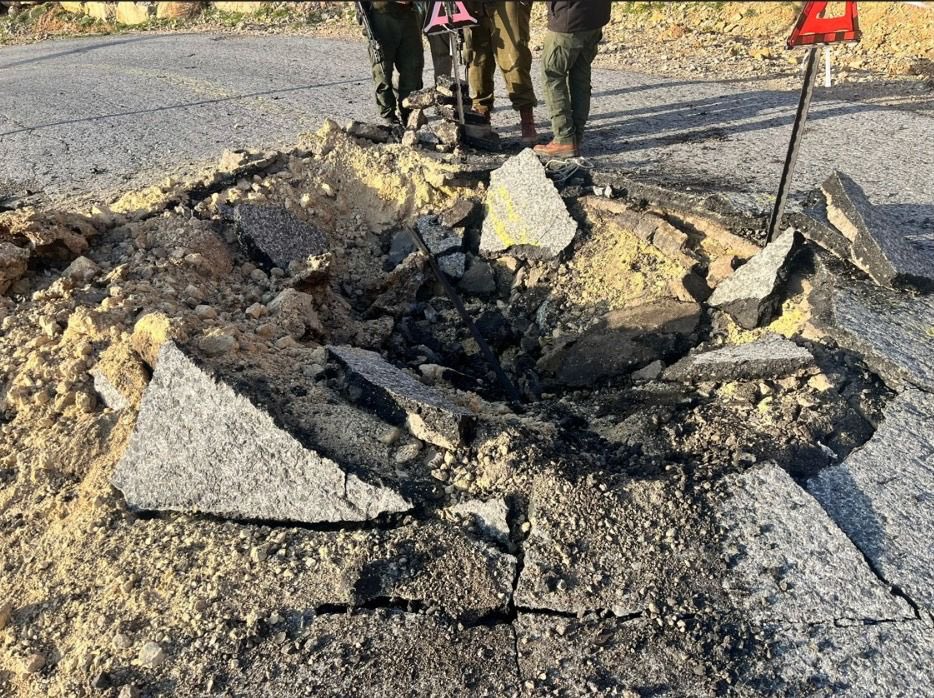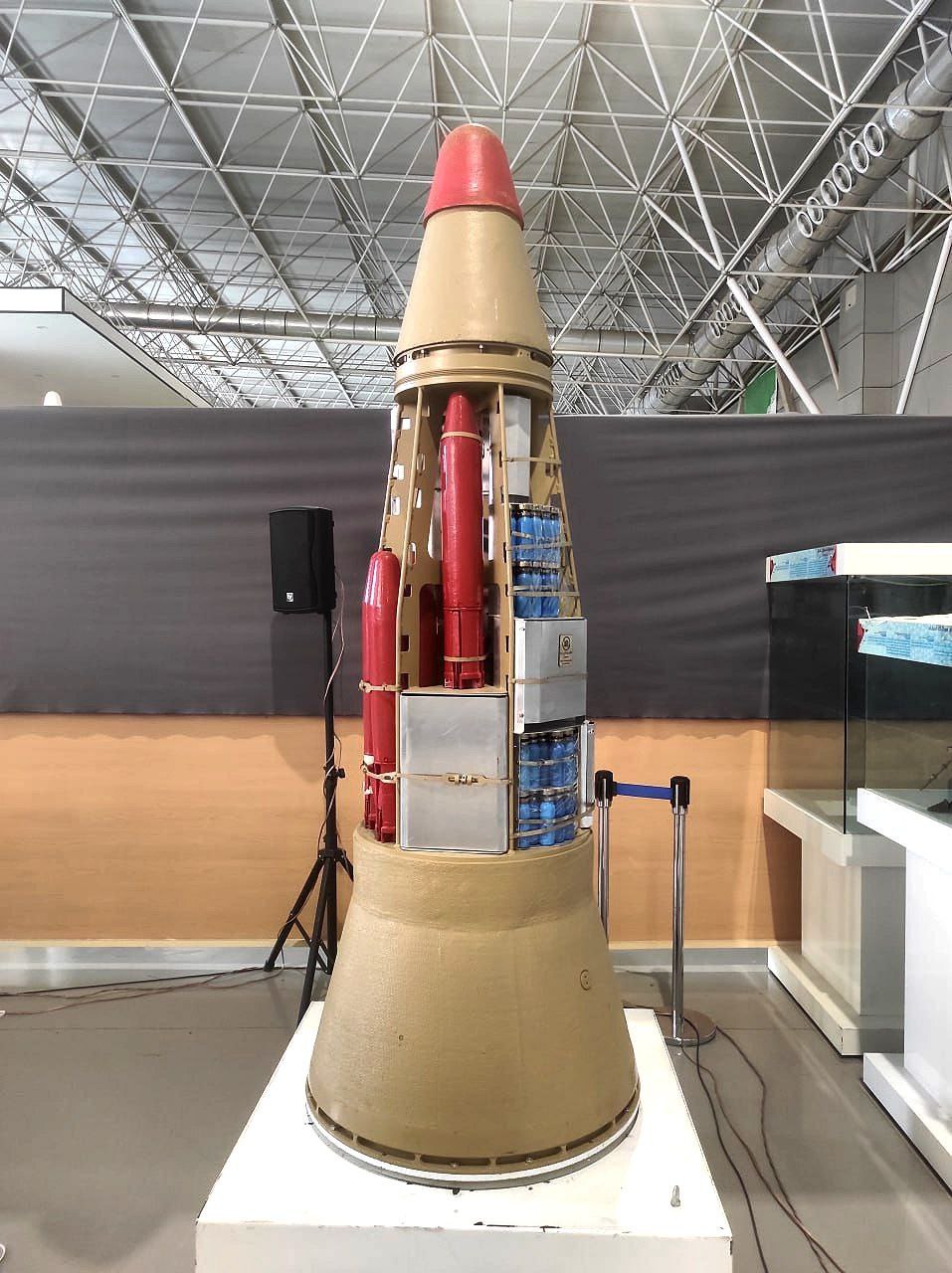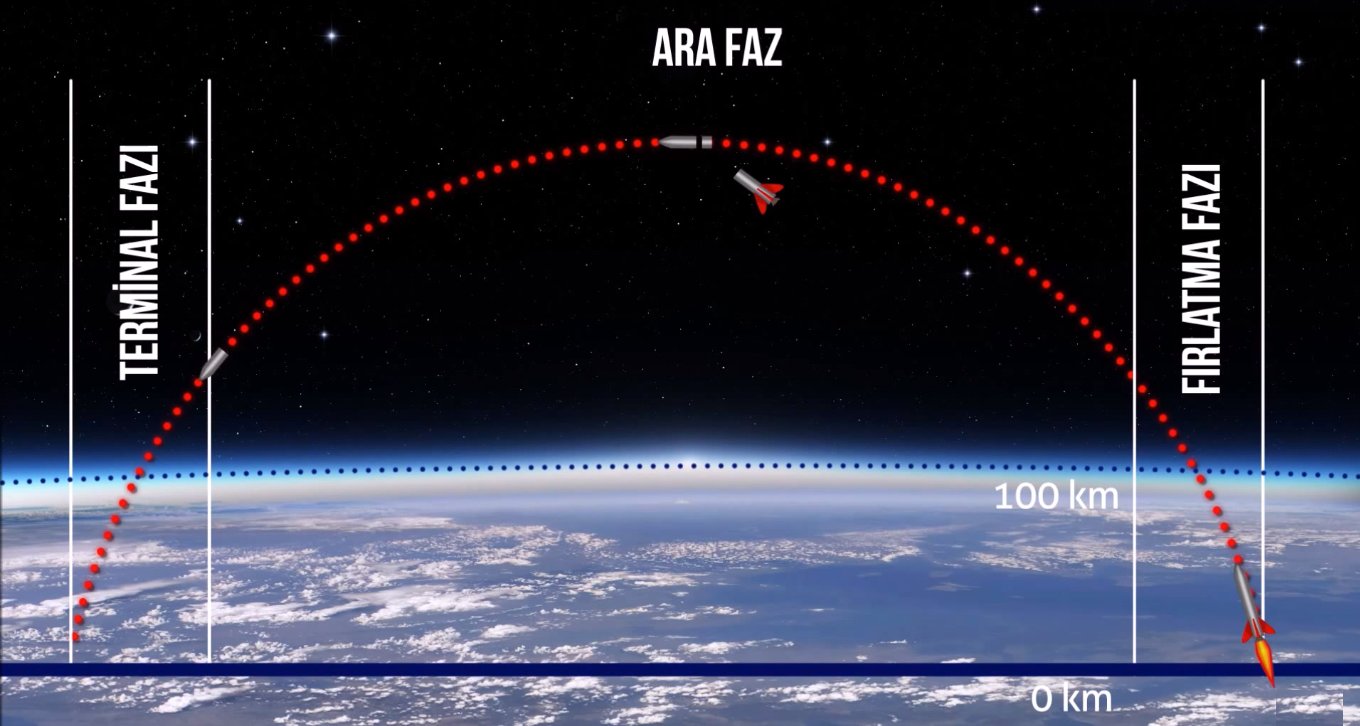thats simply wrong, even US admitted to 9 landings on air bases, real number could be higher. Who knows...I read/heard that over 300 missiles/drones were launched against Israel but only 3 got through.
Latest Thread
You are using an out of date browser. It may not display this or other websites correctly.
You should upgrade or use an alternative browser.
You should upgrade or use an alternative browser.
Live Conflict Iran-Israel Conflict (2025)
- Thread starter UkroTurk
- Start date
isolated???? Believe me, IRAN has more access to Western technologies through PEUGOT and SIEMENS much, much more than Turkey. Combined with know-how from North Korea and China, it is much easier for the Iranians than TurksExcellent?
50% of the missiles didnt launch or failed to launch.
From the 65 old crap missiles that reached Israel, only 55 were brought down.
10 missiles were a hit. Penetrating different airpaces from different countries and reaching the two most fortified airbases of Israel. And this wile they announced the attack a week before.
For a country that is isolated and sanctioned for almost 40 years, that is a succes.
yeah i think simple common sense would bring anyone to the same conclusion. smoke and mirrors event no different to when they attacked the american base and trump let it out the bag that it was pre arranged.
But generally you find women can sniff out bullshit from miles away before the common guy can.
\Like I said, it's never about airspace violation.
Here Israeli mindef boasting that the skies of the Middle East is open for them to use.
What he did mean is Gulfies and Jordan are in cooperation with Israel. They have provide intel about fired missiles and drones. And they are opening ther airspaces
\
What he did mean is Gulfies and Jordan are in cooperation with Israel. They have provide intel about fired missiles and drones. And they are opening ther airspaces.
Yes, like I said b4 , Jordan shooting at Iranian missiles has nothing to do with Jordan trying to maintain sovereignty whatsoever. It's a show of loyalty, the kind of which you'd find from that of a dog to his master.
Scott Summers
Contributor
What has the Swiss has anything to do with this?
I think Switserland is the contact attaché or mediator between Iran and the US because they dont speak directly.
What has the Swiss has anything to do with this?
It should've been the BelgiansI think Switserland is the contact attaché or mediator between Iran and the US because they dont speak directly.
Jordanian Air Force patrols to prevent Israel from using its airspace. They doesn't want both sides to use the airspace.
Jordanian Air Force denied reports that Jordan had opened its airspace to Israel.
Jordan denied this statement. They even said that they were patrolling against the Israeli air force.\
And they are opening ther airspaces.
It depends on how the interception takes place - The fuel tanks are designed to separate and there is a possibility to disintegrate the warhead from the booster. We've seen downed fighter jets where entire fuselages were intact (some even after ground impact).Definitely not intercepted, that is first stage that fell after separation.
There is no way, a hit to kill interception at high hypersonic speed would left the whole first stage intact like this. It would've smashed it into many pieces.
The below accounts all state it's been intercepted but again they're all western sources
https://youtube.com/shorts/1a8qBQzb00Y?si=XJO-75zvA_PQmHXw
https://news.sky.com/story/seeing-i...k-on-israel-was-symbolic-seem-absurd-13116767
https://www.timesofisrael.com/liveb...assive-intercepted-iranian-ballistic-missile/
https://abc7ny.com/israel-iran-gaza-war-news-live-updates/14675356/
https://news.sky.com/video/iran-att...lay-downed-iranian-ballistic-missile-13116604
Last edited:
It depends on how the interception takes place - The fuel tanks are designed to separate and there is a possibility to disintegrate the warhead from the booster. We've seen downed fighter jets where entire fuselages were intact (some even after ground impact).
The below accounts all state it's been intercepted but again they're all western sources
https://youtube.com/shorts/1a8qBQzb00Y?si=XJO-75zvA_PQmHXw
https://news.sky.com/story/seeing-i...k-on-israel-was-symbolic-seem-absurd-13116767
https://www.timesofisrael.com/liveb...assive-intercepted-iranian-ballistic-missile/
https://abc7ny.com/israel-iran-gaza-war-news-live-updates/14675356/
https://news.sky.com/video/iran-att...lay-downed-iranian-ballistic-missile-13116604
None of this news sources are explicitly verifying that interceptions happened with the first stage fuel tanks. Of course Israeli AD intercepted most of the missiles, but it's definitely the warhead after separation.
It is not correct to compare with fighter jets when those are intercepted in subsonic to low supersonic speed with blast fragmentations. (So, many times main body structure survive) These are missiles intercepted at mach 10 with hit to kill shots. If Anybody thinks a whole first stage body will remain intact arter hit to kill interception at high hypersonic speed then......well, be my guest.
We will be neutral so who cares? Let Mullahs and Zionists destroy each other. I agree with that Freemason guy on that front.You are hoping for WW III?
If this thing escalates, it will take every muslim nation with it (Turkey, Algeria, Indonesia, Egypt) against Israel and their Western backers, like it states in the Islamic Hadith.
This is the Third World War that freemason Albert Pike predicted hundred years ago:
"The Third World War must be fomented by taking advantage of the differences caused by "agentur" of the "Illuminati" between the political Zionists and the leaders of Islamic World.
The war must be conducted in such a way that Islam (the Moslem Arabic World) and political Zionism (the State of Israel) mutually destroy each other.
Meanwhile the other nations, once more divided on this issue will be constrained to fight to the point of complete physical, moral, spiritual and economical exhaustion...
We shall unleash the Nihilists and the atheists, and we shall provoke a formidable social cataclysm which in all its horror will show clearly to the nations the effect of absolute atheism, origin of savagery and of the most bloody turmoil."
Jordanians cooperate not only with Israel. He closed his airspace to Iran, “forgetting” to do so for the “coalition.” Saudi Arabia did the same. There is nothing to say about Syria and Iraq. Nobody will ask them anything.\
What he did mean is Gulfies and Jordan are in cooperation with Israel. They have provide intel about fired missiles and drones. And they are opening ther airspaces.
This “coalition” includes not only Western countries. They were also joined by the Saudis and their local allies. There can be no talk of any Muslim unity. There is not mistrust between them, but real enmity. After the missile attack, Riyadh called Iran not a brother, but a sponsor of terrorism that interferes with Saudi Arabia's cooperation with Israel.
None of the major Muslim countries openly supported Iran. The strongest political support came from... Russia (for a well-known reason) “the greatest friend of Muslims” (and in fact their greatest enemy, along with the USA, China, France, India and several others).
The smallest of the Muslim countries, Azerbaijan, acted “very wisely” by calling on the warring parties for world peace
Turkey and Pakistan cannot support Tehran not because Iran has repeatedly threatened the former because of NATO bases on its territory, and most recently staged a bombing duel with the latter. But because Iran, by definition, cannot be the connecting center of the so-called Muslim world.
Who else is here?
“Land of the Pharaohs” - with feet and hands tied at Camp David...
The largest of them, Indonesia, continued to conduct secret negotiations with Israel right during the bombing of the Gaza Strip. And his “representative” on our forum, dear Gary, did not stop talking about the chimera called “unity of the Muslim world,” continuing his inconsolable serenade under Putin’s window
Excellent?
50% of the missiles didnt launch or failed to launch.
From the 65 old crap missiles that reached Israel, only 55 were brought down.
10 missiles were a hit. Penetrating different airpaces from different countries and reaching the two most fortified airbases of Israel. And this wile they announced the attack a week before.
For a country that is isolated and sanctioned for almost 40 years, that is a succes.
Do you really believe that 50% of the missiles failed to launch? Just because the U.S said so? Providing no evidence.
The US are serial liars
I have decided to update my assessment of the matter in light of new information that has emerged.It has been confirmed that a C-130 transport plane and storage areas were hit in Nevatim. So I'll have to round it up.
It was written on Wikipedia that F-35 warplanes were deployed for Nevatim air base and that this fleet was the fleet that would send Israel's nuclear weapons to the target.
Therefore, Israel and its allies defended themselves against 65 ballistic missiles yesterday. And they could only hit 50-55 of them. 10 missiles hit air bases. 7 of these were in Nevatim.
If Iran really wanted to wipe this air base off the map, 3-4 times the 65 missiles it sent yesterday would be enough. Then, the nuclear weapon-loaded F-35s, one of Israel's nuclear trinity, would be destroyed. This is no success, folks. Please don't make fun of our minds.
First of all, it is necessary to look at the profile of the ballistic missiles used by Iran. It seems that the missile that hit Israel's Nevatim air base turned out to be a Ghadr BF missile.


The warheads used in the missile are designed to disperse in the air in a cone to make it difficult to be hit by missile defense systems.
As you can see, the only warheads from the 50 kg artillery rocket actually hit the target like this. Therefore, the number of ballistic missiles that hit Israel was probably 1-2, not 9-10.
The most distinguishable feature of the Ghadr compared to the older Shahab-3 is its conic nosecone with a ‘baby bottle’ cylindrical shape. This adjustment likely reduced the volume of the payload the missile could carry by about 20 percent and the Ghadr likely carries a 750 kg warhead compared to the 1,000 kg warhead designed for the Shahab-3. This denser warhead also increases the speed of its reentry vehicle, making missile defense intercepts more difficult.
A December 2008 report estimated a CEP of 300 m for the Ghadr-1, which has been echoed by more recent analysis. More recent reports suggest Iran achieved this accuracy by equipping the Ghadr with a strap-down guidance package. If reports regarding the Ghadr-1 accuracy are correct, then it would be a significant improvement of the Shahab-3 (2,500 m CEP). Reports also indicate the possibility that Ghadr could be designed to carry a nuclear payload. This possibility is raised with uncertainty as the Ghadr appears to be comparable to the Shahab system, whose apparent goal is to obtain such a payload.

Emad, Ghadr (Shahab-3 Variants) | Missile Threat
Emad and Ghadr are Iranian variants of its Shahab-3 ballistic missile.
 missilethreat.csis.org
missilethreat.csis.org
Here, CSIS defines the Ghadr ballistic missile as a missile with a 750 kg warhead, a range of 300 m, and most importantly, the potential to carry a nuclear warhead. Work on the missile started 16 years ago.
Now let's talk about the dilemma of Israel and its allies here. Iran attempted to fire around 120 missiles that night. However, Israel and its allies were able to intervene in half of this. In other words, a single Ghadr missile escaped from around 60-65 missiles and aimed those mini warheads at the target.

The US and its allies should have destroyed the Ghadr missile in the launch or intermediate phase before it reached the terminal phase. Once the missile enters the terminal phase, it begins to "scatter" its warheads while diving.
For missile defense, the US used warships with this capability off the coast of Israel and Yemen, and missile defense systems stationed in Erbil and the Gulf countries. (Of course, we are making general assumptions here. However, in Saudi Arabia, they probably only used radars, etc. Otherwise, it does not appear that there was an active intervention.)
However, there are a few fine details here. First of all, this entire missile defense ecosystem (missile defense batteries and early warning radars and sensors stationed in Qatar-Saudi Arabia and other Gulf countries) was used in "peacetime".
Fighterjet taking off from Gulf countries, Iraq and US aircraft carriers also took off in "peacetime". This is where the importance of war diplomacy and the involvement of countries in war comes into play.
The propaganda of Israel and its allies is that Arab countries are fully mobilized to defend them. However, such a thing is not the case.
Jordan had not opened its airspace to anyone. And fihterjets were patrolling the air not only for Iranian kamikaze but also for Israeli fighterjets.
Likewise, the United Arab Emirates did not cooperate with the USA and its allies against Iran's attack. There is no confirmed news that even the Saudis are cooperating with the coalition countries.
Therefore, if a state of war really occurs, Iran will ask its neighbors who have US military bases in their country to pacify the US military presence if they do not want to be a party to the war.
This also means that the data flow from the Kürecik Radar base to the USA should be actively cut off, and the radars in the Gulf countries should not lock Iran's air and missile assets.
Likewise, US fighterjets cannot take off from these countries, otherwise these countries will become parties to the war. It seems unlikely that Iran will go to war with the Gulf countries as long as they do not pose a threat to its existence.
As soon as the sensor-radar and missile defense batteries (Thaad-Patriot missile defense systems, etc.) that are a part of the missile defense systems in all countries in the region are pacified, the USA and its allies will be like birds with broken wings.
Even if they don't turn into birds, the US missile defense system assets that are so close to Iran are within artillery range in Erbil, for example. To protect all these systems, you need to assign a special Iron Dome to each of them.
Even if you achieve such a thing, all these beings will still be the subject of a small war of their own and will face a dilemma of whether to protect Israel or themselves.
I think it is now known to everyone that Israel and its allies, who cannot prevent a potential nuclear attack with ballistic missiles even in peace, will not even come close to being successful in war.
If we look at the different potential consequences of the issue based on a single event, if the Nevatim airbase that was hit was actually hit by a ballistic missile with a nuclear warhead; (Unless Israel had a different air base-fleet structure that could carry out a nuclear attack, unlike F-35 warplanes) the air force leg of the nuclear trilogy would be history.
@Kartal1 @Zafer @Gary @Afif @NEKO
Last edited:
Brilliant video.
We will be neutral so who cares? Let Mullahs and Zionists destroy each other. I agree with that Freemason guy on that front.
I think being neutral is the wrong way to go. Lets presume we sit back and do nothing, this is what i suspect will transpire. Iran via her shia proxy terrorists will spread across the region. This will not create a united empire, it will simply destabilise and stop sunni muslims from forming any united or coherent regional policy. These proxy forces can win no serious war or obtain any real long term results.
While all this is happening, Isreal will use the Iranian card/proxy card as the perfect foil to continue their war, a war which is entirely expansionist in nature. Isreal isnt fighting these wars to defend isreal, they are fighting these wars to expand.
Stretch it out across a hundred years, which isn't much considering the Mullah regime has already existed for 40 years and eventually what will happen Isreal will expand to the Turkish border. The sunni majority nations she will expand across will be completely ruined/exhausted in the region as a result.
What we should be doing is behaving entirely opportunistic, a give and take approach in order to expand on our interests. Neither nation can afford a hostile Turkey, play a balanced game and when we need to move we give and we take depending on how it benefits us. What we cant do is take an all in approach on either side, then we get screwed by it.
From a Turkish perspective both sides should be treated as enemies. Use their hatreds of each to the nations benefit. Just like they have used the PKK against us. Or sided with our rivals like armenia, greece etc. Time to screw both of them hard.















